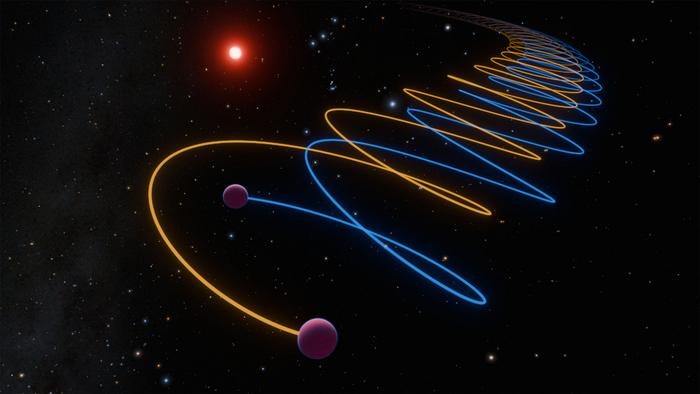
Peppered throughout the universe are balls of gas that never got promoted to stardom. In a strange twist, evidence has just emerged that the most famous of these orbs is actually a double-act.
Where astronomers thought there was one brown dwarf, there’s actually two. And the object they studied isn’t just any ordinary brown dwarf. Gliese 229B was the first known brown dwarf, discovered in 1995. These objects are much larger than gas giant planets. Gliese 229B was estimated to be about 70 times more massive than Jupiter. The sizes of brown dwarfs brought them daringly close to becoming stars, though they didn’t quite cross that threshold.
But there was always something strange about Gliese 229B. This brown dwarf was just too dim for its size.

Two astronomical instruments in South America helped reveal its deep secret: Gliese 229B is actually two objects. The instruments used in this new discovery, detailed in a new paper published Wednesday in the journal Nature, are based at the European Southern Observatory's Very Large Telescope, which sits at a 8,645-foot elevation on Chile’s Cerro Paranal.
The GRAVITY instrument in Chile combined light from four different telescopes to spatially resolve the duo. And the CRIRES+ (short for Cryogenic high-resolution Infrared Echelle Spectrograph) instrument gathered data that astronomers then used to measure the doppler shift of gas in each brown dwarf, as one every so slightly traveled towards Earth and then receded away while the twin brown dwarfs orbited one another.
They’re very close. They take only 12 days to orbit one another, and they’re separated by a short cosmic distance roughly equivalent to 16 times larger than what separates Earth and the Moon. They dance together around a star that is redder and smaller than the Sun, taking 250 years to complete one orbit.
“They'd look quite strange in our night sky if we had something like them in our own solar system," Rebecca Oppenheimer, a member of the team who discovered Gliese 229B almost 30 years ago, said in an announcement about the new research.
And, instead of a single brown dwarf being 70 times the mass of Jupiter, it now looks like there’s one weighing about 38 times Jupiter’s mass, while the other weighs about 34 times more than the Jovian world.
Oppenheimer and others are thrilled to see new science emerge from their original findings.
The lead author of the Nature paper, Jerry Xuan, tells Inverse that this work may have implications for why brown dwarfs do not assemble enough mass to become stars. Perhaps, it could have something to do with the circumstellar disk, the plate-shaped region of dust and gas from which a stellar system and its planets are born.
“The mass of the circumstellar disk is limited, so fragmenting into two objects instead of one object would naturally give you lower masses for each of the two objects,” Xuan tells Inverse. “If the disk only fragmented into one object instead, it would have a mass of about 71 Jupiter masses or maybe higher, which approaches the mass of a star!”
For Oppenheimer, it’s a new chapter of an old story.
"This is the most exciting and fascinating discovery in substellar astrophysics in decades,” Oppenheimer said.







